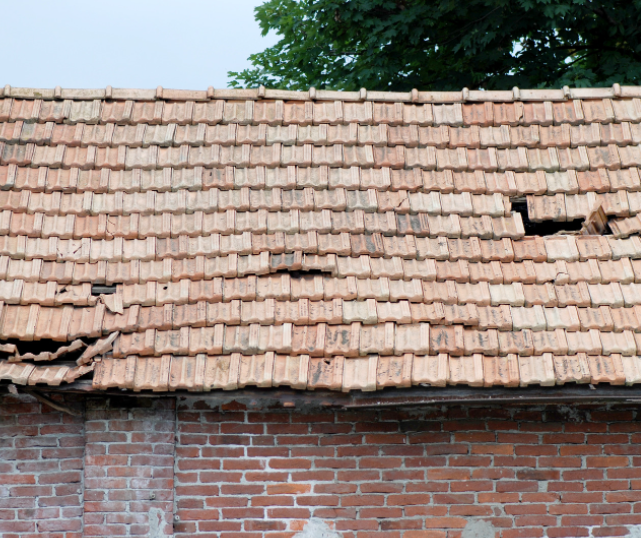A failing roof is one of the most pressing concerns for any homeowner as it can make your home essentially unlivable. Older or improperly maintained roofs are particularly vulnerable to failing in severe weather conditions, and can cost upwards of tens of thousands to repair – and that’s if you’re lucky.
Needless to say, it’s important for any homeowner to be able to identify if their roof is in danger of failure during the next storm or rainy period. By identifying the signs of a failing roof, you can take pre-emptive action to make sure it can survive whatever the weather throws at it here on Vancouver Island.
Tell-Tale Signs of a Failing Roof
1. Age. Depending on the type of material the roof is made from, it may simply be time to have it rebuilt. For example, an asphalt shingle roof typically lasts 20 to 25 years before requiring replacement. If you’re unsure of the age of your roof, a qualified roofer can provide an assessment.
2. Mold growth. If you notice mold growing where the roof and wall meets or on exterior walls, it could indicate the roof requires replacement. Swelling wood and rot from damaged flashing creates moisture and ideal conditions for mold to propagate. Further, water that’s leaked into interior walls due to damaged gutters also provides ideal conditions for mold to sprout.
3. Sagging roof. The roof ridge and deck should always be straight. If there is a dip developing along any ridges or along the roof deck, it signals rot or that the rafters or trusses are beginning to fail.
4. Loose nails. Although nails may become exposed or loose over time, they should be replaced immediately. If left, water can easily penetrate the roof structure causing all sorts of damage. If you’ve replaced a great deal of loose or missing nails over time, this could indicate that the roof is weakening.
5. Missing shingles. Strong winds can cause the occasional shingle to loosen or fly away. However, if there are several missing or loose shingles, there may have been time for rain, snow, and ice to seep inside the home. Always check for missing or damaged shingles after heavy storms.
6. Warped shingles. Deteriorating shingles either indicates improper ventilation in the attic or a looming roof failure. Shingles curl over time. However, cracked shingles indicate the underlay has dried and deteriorated. Humidity can cause blistering and moisture build-up in the attic.
7. Algae growth. Algae can be detected since it appears darker and dirtier than the rest of the roof. Algae grows under moist conditions in shady areas. If not removed in a timely manner, algae growth can cause a major roof disaster.
8. Water stains. If there are noticeable dark water stains creeping across the ceiling inside the home, there may be worse water damage elsewhere. It’s always a good idea to inspect the attic annually to catch leaks early on. Arm yourself with a good flashlight and check the attic floor and insulation for moisture.
The experts at Shoreline Roofing can help you with all of your roofing needs, including maintenance, installations, repairs, de-mossing and much more. Contact us today at (250) 413-7967 or at ed@shorelineroofing.ca to find out more about how our services and how we can help you.

